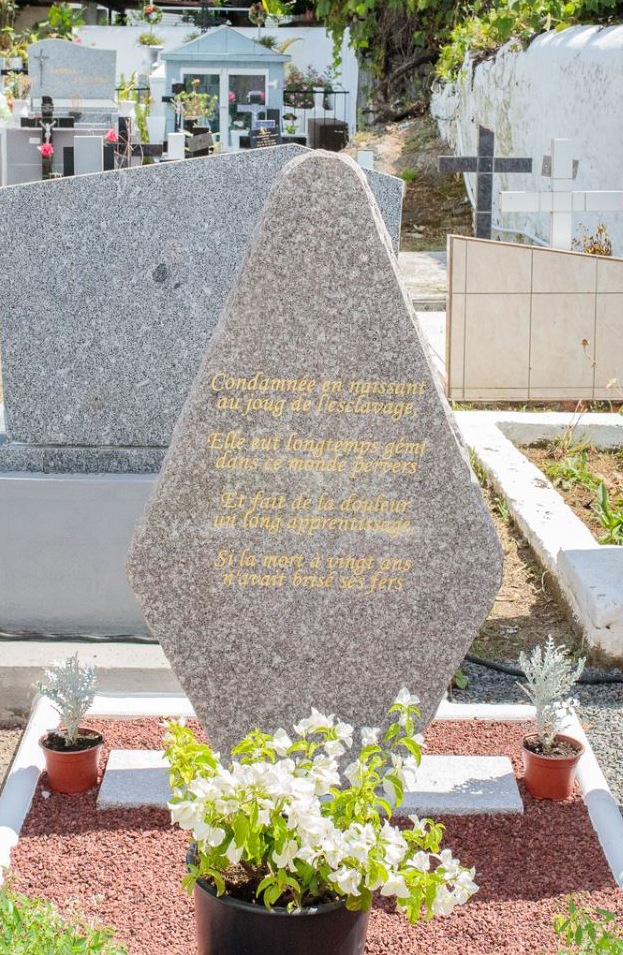Anyone wishing to issue a detailed study of enslaved persons in general, and more particularly enslaved women, will come up against a shortage of sources.
At times, sources on the topic have been deliberately covered up. In recent years, I was faced with the difficult task of attempting to obtain restitution of the tombstone provided for the enslaved woman Delphine, who was given the name of ‘Hélod’ on being emancipated in 1835, by her master’s family. The tombstone was secretly removed when the remains of the poet Charles Leconte de Lisle were brought back to the marine cemetery in Saint-Paul, with the aim of providing a decent, though fictional, tomb for the pirate La Buse.
In Saint-Benoît, the epitaph written by Auguste Logeais for the enslaved woman Cécilia, daughter of the slave Janvier, which was refused by her masters following her death, was finally inscribed at the entrance to the cemetery in 2021. It is essential that we do our utmost to conserve elements of our heritage that can cast light on the history of the island’s enslaved women.

Women reduced to slavery were considered equal to male slaves as regards work and punishments. They became objects, property of a master, but also the property of male slaves, particularly when they married. During the whole period of slavery, and notably after sugar started to be grown in the colony, there were fewer women than men slaves. There were constant tensions between the enslaved men and women. Enslaved women would often prefer to remain unmarried. As they were few in number, living in partnership with a man rather than being married was a way of avoiding persecution, since the man would be afraid of them leaving.
Marriage, on the other hand, left them vulnerable to the violence of the husband in the event of them being unfaithful since, when they pronounced their marriage vows, the spouses were reminded that if either of them was unfaithful, he or she was to be whipped in public by the other spouse. To avoid punishing his wife in public, the husband whose wife had been unfaithful would prefer to punish her behind closed doors.
Through refusing marriage to her partner, the enslaved woman refused to bow to male domination. Due to differences in status, the situation in Reunion remained highly imbalanced and violent. Since slavery weakens human beings, for male slaves the violence perpetrated against the weakest (women and children) became a means of imitating the dominant group, giving them a feeling of importance through inspiring fear.